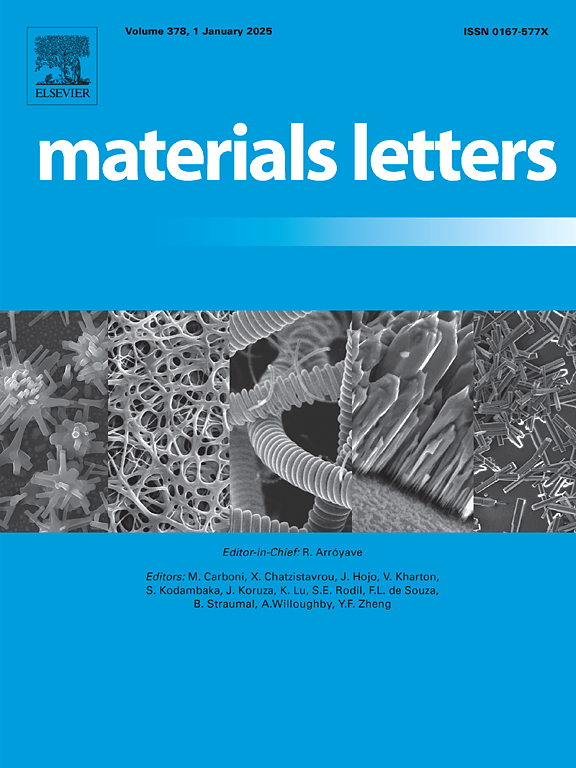Inhibitory effect of graphene on tin whisker growth induced by atomized Sn
IF 2.7
4区 材料科学
Q3 MATERIALS SCIENCE, MULTIDISCIPLINARY
引用次数: 0
Abstract
Tin (Sn) whiskers pose significant reliability risks in electronics, especially with the transition to lead-free solders. Mitigating Sn whisker growth remains a significant challenge. Here, Ti2SnC is used as a model to provide atomized Sn, which is the key driver for Sn whisker growth, and graphene is introduced to inhibit Sn whisker growth. Mechanochemical decomposition of Ti2SnC via ball milling releases atomized Sn, which is incorporated into a Sn matrix by thermo-compression to assess its effect on whisker formation. Adding graphene to the composite restricts long-range Sn diffusion, significantly reducing whisker length and density. Graphene's two-dimensional structure forms nanoscale diffusion barriers, hindering atomic migration and aggregation. These dispersed graphene nano-walls inhibit whisker growth effectively without damaging the bulk matrix, providing a promising approach to enhance reliability in lead-free solder systems.
石墨烯对锡原子化诱导锡晶须生长的抑制作用
锡(Sn)晶须在电子产品中构成重大的可靠性风险,特别是在向无铅焊料过渡的过程中。抑制锡晶须生长仍然是一个重大挑战。在这里,Ti2SnC作为模型提供了雾化的锡,这是锡晶须生长的关键驱动因素,并引入石墨烯来抑制锡晶须的生长。通过球磨对Ti2SnC进行机械化学分解,释放出雾化的Sn,并通过热压缩将其纳入Sn基体中,以评估其对晶须形成的影响。在复合材料中加入石墨烯限制了锡的远程扩散,显著降低了晶须的长度和密度。石墨烯的二维结构形成纳米级扩散屏障,阻碍原子迁移和聚集。这些分散的石墨烯纳米壁有效地抑制了晶须的生长,而不会破坏体基体,为提高无铅焊料系统的可靠性提供了一种有前途的方法。
本文章由计算机程序翻译,如有差异,请以英文原文为准。
求助全文
约1分钟内获得全文
求助全文
来源期刊

Materials Letters
工程技术-材料科学:综合
CiteScore
5.60
自引率
3.30%
发文量
1948
审稿时长
50 days
期刊介绍:
Materials Letters has an open access mirror journal Materials Letters: X, sharing the same aims and scope, editorial team, submission system and rigorous peer review.
Materials Letters is dedicated to publishing novel, cutting edge reports of broad interest to the materials community. The journal provides a forum for materials scientists and engineers, physicists, and chemists to rapidly communicate on the most important topics in the field of materials.
Contributions include, but are not limited to, a variety of topics such as:
• Materials - Metals and alloys, amorphous solids, ceramics, composites, polymers, semiconductors
• Applications - Structural, opto-electronic, magnetic, medical, MEMS, sensors, smart
• Characterization - Analytical, microscopy, scanning probes, nanoscopic, optical, electrical, magnetic, acoustic, spectroscopic, diffraction
• Novel Materials - Micro and nanostructures (nanowires, nanotubes, nanoparticles), nanocomposites, thin films, superlattices, quantum dots.
• Processing - Crystal growth, thin film processing, sol-gel processing, mechanical processing, assembly, nanocrystalline processing.
• Properties - Mechanical, magnetic, optical, electrical, ferroelectric, thermal, interfacial, transport, thermodynamic
• Synthesis - Quenching, solid state, solidification, solution synthesis, vapor deposition, high pressure, explosive
 求助内容:
求助内容: 应助结果提醒方式:
应助结果提醒方式:


